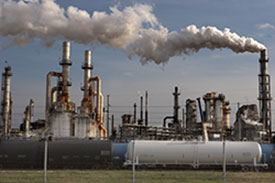Missouri Hazardous Material Incident Surveillance

Missouri Hazardous Material Incident Surveillance (MHMIS) was established in August 2012 at the Missouri Department of Health and Senior Services (MDHSS), Bureau of Environmental Epidemiology (BEE). MHMIS tracks releases of hazardous materials that have public health consequences.
MHMIS aims to decrease the risk to human populations by collecting and analyzing data on toxic substance incidents. MHMIS uses prevention outreach and education to raise awareness of the hazards associated with toxic substances. Key MHMIS features include:
- Tracking releases of toxic substances
- Analyzing public health risks and impact
- Contributing to a national database
- Conducting event notification and follow-up with agencies involved in hazmat incident response
- Performing educational, outreach, and prevention activities with community partners
MHMIS contributes to the Agency for Toxic Substances and Disease Registry’s (ATSDR) National Toxic Substance Incidents Program (NTSIP). NTSIP began on a national level in 2010 and was modeled in part after ATSDR’s Hazardous Substances Emergency Events Surveillance (HSEES) Program. HSEES conducted surveillance of hazardous substance releases nationally from 1990 to 2009; Missouri participated in HSEES from 1993 to 2006. Missouri is one of ten states currently participating in NTSIP. NTSIP has three components: a national database, state surveillance, and a chemical exposures response team. For more information on how these initiatives reduce the harm caused by toxic substance releases, visit the NTSIP website.
Related Links
Missouri Links
- Missouri Department of Natural Resources (DNR) Environmental Emergency Response (EER)
Missouri’s Spill Bill (260.500 – 260.550 RSMo) requires that responsible parties report hazardous material releases to DNR’s 24-hour Spill Line (573-634-2436), or to the National Response Center (800-424-8802). As detailed in the Spill Bill, the EER section is responsible for responding to significant releases of hazardous materials that pose an immediate threat to surrounding populations and environments. - Missouri Emergency Response Commission (MERC)
MERC is Missouri’s State Emergency Response Commission (SERC), as required by the Superfund Amendment and Reauthorization Act (SARA). MERC protects public health and the environment through a variety of responsibilities such as hazmat training for responders and managing Tier Two forms for facilities using hazardous chemicals throughout Missouri. - Missouri Poison Center
The Poison Center has nurses, pharmacists, and physicians that provide guidance to callers reporting potential poisonous exposures. The Center also engages in outreach and education activities. The Missouri Poison Center’s help line is:
314-773-5200 (for callers in St. Louis) or
1-800-222-1222 (for callers outside St. Louis)
National Links
- ATSDR
The Agency for Toxic Substances and Disease Registry (ATSDR) is a federal public health agency that prevents harmful exposures and illness due to toxic substances. Resources include information on toxic substances, emergency response guidelines, and environmental health education materials. - National Response Center (NRC)
The NRC is the federal government’s point of contact for reporting oil and chemical releases. MHMIS receives reports of Missouri incidents from the NRC. The website features an online reporting tool, a query function to search for certain incidents, and national statistics on incident types.
Chemical Safety Information
- New Jersey Department of Health Right to Know Hazardous Substance Fact Sheets
Factsheets on more than 1,600 substances on NJ’s Right to Know Hazardous Substance List; more than 900 of these are also available in Spanish. - U.S. EPA Substance Registry Search
Information on EPA sources that track or regulate substances. - ATSDR’s Toxic Substances Portal
A tool for community members, toxicological/public health professionals, emergency responders, and health care providers to find information on toxic substances, their health effects, and exposure risks. - NIOSH Pocket Guide to Chemical Hazards
The NIOSH (National Institute for Occupational Safety and Health) Pocket Guide to Chemical Hazards (NPG) is a resource intended for workers, employers, and occupational health professionals. The NPG provides easy-to-read summaries of chemical information to mitigate occupational chemical hazards.
